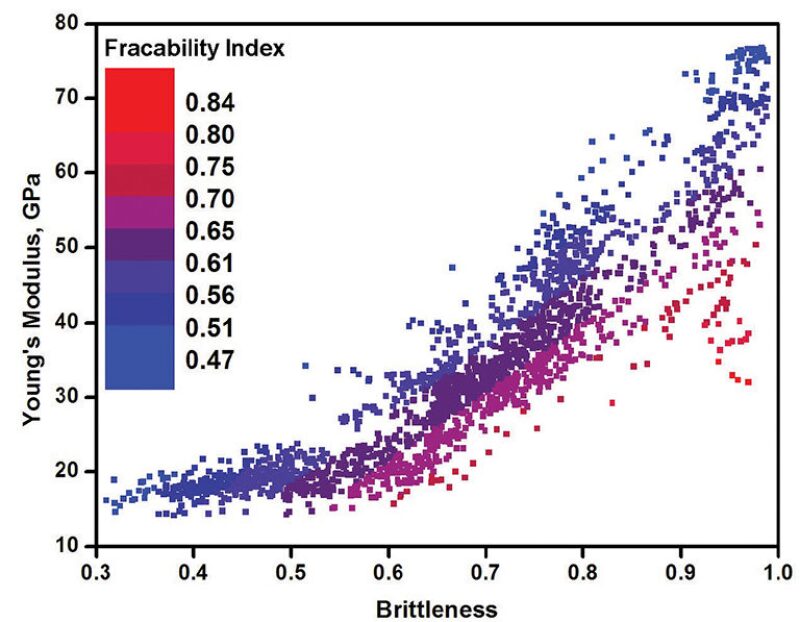For those in shale exploration, “fracability” is a real word, a critical property, and a point of contention.
Fracability has entered the vocabulary of exploration because it is critical for exploration to know if rocks will produce when hydraulic force is applied. It can be a divisive concept, in part because there are a lot of ways to determine fracability, with dueling test methods and multiple equations offered by experts in petrophysics and geomechanics.
A University of Oklahoma team is trying to bridge that gap using widely available information on the makeup of rocks and their properties to generate a fracability rating. It is a difficult challenge because a single grade needs to reflect a lot, from petrophysical properties, such as the presence of brittle minerals, to geomechanical ones, such as the toughness of the rock.
“It is a new definition based on petrophysical and geomechanical properties,” said Xiaochun Jin, who came up with the system while he was a graduate student at the University of Oklahoma.

The one word used to describe what makes a rock fracable is “brittle.” Yet that is sometimes a point of dispute: according to an SPE paper on the work, “there is no universal agreement regarding its definition.”
The paper lists 22 formulas for brittleness based on laboratory testing and well logs. Brittleness matters when trying to fracture rocks to create productive pathways for oil and gas to flow out. A rock with high clay content is likely to be a poor target because it would bend rather than break. The university team’s attempt at settling the argument adds another definition of mineral brittleness based on several widely used measures.
The new system, developed with the assistance of two professors—Subhash Shah and Jean-Claude Roegiers of the Mewbourne School of Petroleum and Geological Engineering at the University of Oklahoma—tries to account for both a rock’s brittleness and strength, which determines the energy needed to break it up.
Brittleness alone has its limits, Jin said. There are highly brittle rocks, like dolomitic limestone, that can act as a barrier, while others are not so brittle, but can be successfully fractured because they are not very strong. Jin said he hopes this will allow explorers to better locate wells and target the most productive layers of thick zones that are most fracable, and to better control fracture growth when hazards are present, such as an aquifer that could flood the well.
The first step in the process is to calculate brittleness using three proven formulas from the list. Each formula can be calculated using well logging data, which costs less than lab testing and requires less time to gather. The next step is to combine that data with one of four other measures of rock properties, most likely Young’s modulus or fracture toughness.
The result of this formula is a fracability index score from 0 to 1. A rating of 0 denotes the perfect fracture barrier, and a 1 signals the best rock for fracturing. A formation with an index number around 0.65 is a good candidate, though further research may lower the boundary somewhat and simplify the calculations.
While the university is working to patent this method, the team is seeking data from operators and service companies on rock properties and production to see how it would have performed as an exploration tool and refine it.
The goal is to reach a broad group of users and perhaps settle some arguments. “We hope this can resolve the dispute over what is fracable,” Jin said.
For Further Reading
SPE 168589 Fracability Evaluation in Shale Reservoirs—An Integrated Petrophysics and Geomechanics Approach by Xiaochun Jin, Subhash N. Shah, Jean-Claude Roegiers, The University of Oklahoma et al.

